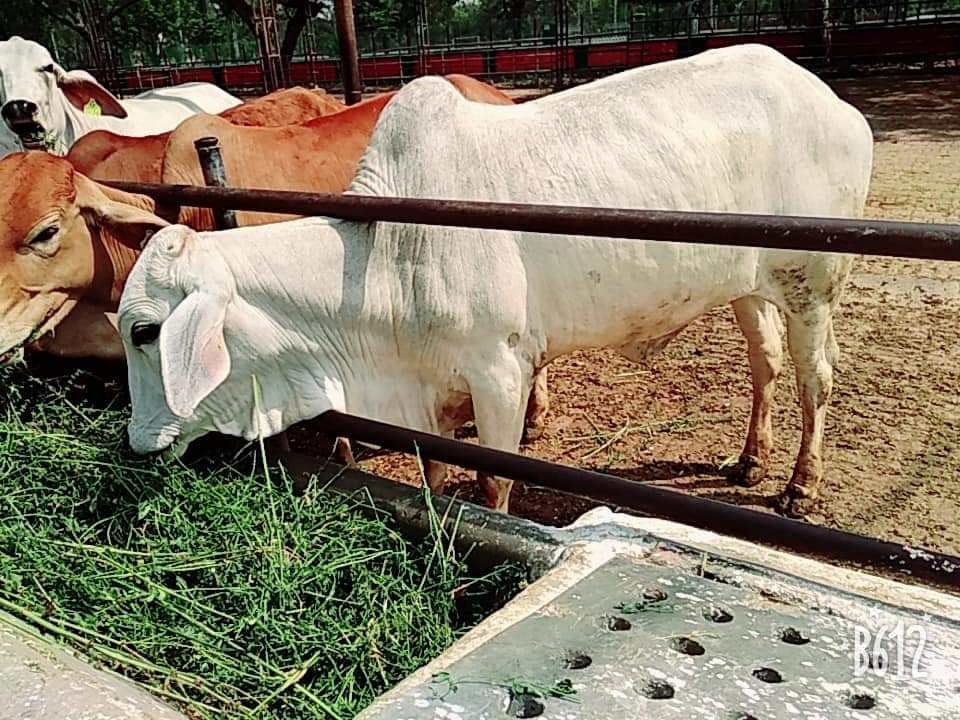IMPORTANCE OF PHYSICALLY EFFECTIVE NDF IN DAIRY ANIMALS
Dr. Ashvini P. Bansod, Dr. Abhilash D. Jadhao, Dr. Sagar R. Surjagade
Now a days, cattle is rear for milk production and for drought purpose. For this, it is necessary to maintain their health. Body weight should be uphold. Milk fat % and milk production should be higher is main aim for rearing. From ancient time, work has done to increase milk production at there level of work. Total Bovine population (Cattle, Buffalo, Mithun and Yak) is 302.79 Million in 2019 which shows an increase of 1.0% over the earlier census. In India, total number of cattle is 192.49 million in 2019 showing an increase of 0.8 % over former Census. From ancient time, people looking for solution to increase milk production. Fibre plays an important role in ruminant nutrition because it help to maintain animal health, an appropriate rumen function and physiology. Nutritionally, fibre is correlated to the mechanical processes of digestion (chewing and passage) and to enzymatic degradation associated with fermentation. Fibre content of a diet is usually expressed in terms of neutral detergent fibe (NDF) and acid detergent fibre (ADF). ADF includes cellulose and lignin as the primary components and concentrations of ADF and lignin are correlated more with digestibility than with intake where NDF includes cellulose, hemicellulose and lignin fractions of feeds and is more highly correlated with feed volume and chewing activity than ADF or CF. Current NRC recommendations for dairy cattle provide only minimum recommendations for chemically measured fiber. Physical characteristics of fiber can impact on animal health, ruminal fermentation, animal metabolism and milk fat production. An important aspect of nutrition which helps dairymen and nutritionists understand milk production and milk composition potential is the particle size of Total mixed ration. Farmers and nutrionist know that the diet on paper does not always match the diet being fed. Farmers found one way to ensure that their cows receive the proper amount of peNDF is by using a Penn State Particle Seperator to analyze their ration. So, among lots of solution, Physically effective fibre is concept to achieve goal. In 1997, Dr. Dave Mertens of the US Dairy Forage center created this term. Physically effective NDF is defined as the fraction of fiber which stimulates chewing and contributes to the floating mat of large particles in the rumen. It is related to particle size of feed and correlated to milk fat concentration. Diets high in peNDF promote rumination and the production of saliva, which acts as a buffer to raise rumen pH. High rumen pH increases production of volatile fatty acids, especially acetate and butyrate, which are used to synthesize short chain fatty acids that contribute to higher milk fat concentration. Knowing a diet’s particle size is key to understanding its peNDF potential. Long forage particles, such as hay, are great for stimulating rumination, but if particles are too large there is a risk of cows sorting and not eating the entire formulated TMR. On the contrary, if feed particles are too small they will pass directly through the rumen without stimulating rumination. Effective fibre and physically effective fibre are two terms which are used interchangealy where the term physically effective fibre is restricted. Chewing response of feed is related to this. Physically effective NDF is product of NDF and physical effectiveness factor (pef). physical effectiveness factor is lies in between 0 to 1.
By using Penn State Particle Separator
Penn state particle separator is used to measure particle size in various farm. Before PSPS, particle size is measured in laboratory which is expensive and criticle for farmers. Previously, the Particle separator is made of from a 19mm sieve, an 8 mm sieve and bottom pan. After some modifications, a third sieve was introduced a 1.18 mm sieve, in order to better characterize small feed particles. This helps in supporting the idea that this size was the critical threshold for ruminal stimulation, as particles smaller than 1.18 mm were believed to be rapidly digested or pass directly through the rumen. Again one more sieve was also introduced of 4 mm pores. The addition of this sieve allowed for on farm analysis of peNDF. This sieve is more accurate for for assessing peNDF for high producing dairy cows. In the latest version of the PSPS, peNDF can be calculated by adding the total weight from three sieves and NDF content is multiplied by the total. Furthermore, peNDF by itself will not guarantee that the diet is well balanced and that rumen pH will be correct, as diet starch or total carbohydrate levels have been shown to significantly impact rumen pH in high producing cows with high dry matter intakes.Feeding management also plays an important role in the particle length needs of the cow. Guidelines for ration for high producing dairy cows are 2 to 8 % of the particles in the upper sieve, 30 to 50 % in the middle sieve, 10 to 20 % on the 4-mm sieve, and no more than 30 to 40 percent in the bottom pan. 60 to 70 percent of the TMR should be classified as physically effective, to be multiplied by the NDF content of the diet or forage. Only forage and high fiber byproducts should be classified as effective fiber sources. Further evaluations of this new method to estimate peNDF are continuing.
BY MONITORING COW FEACAL SCORES
Another method for particle assessment of feed is monitoring cow feacal score. Make sure that cows have an average fecal score of 2.5-3.5 on a scale from 1-4. Before mixing check the particle size that not be too much long or small. There is one order by which the ingredients in the TMR are mixed. The general rule of thumb is to add dry forages first, silage second, and grains and concentrates last.



